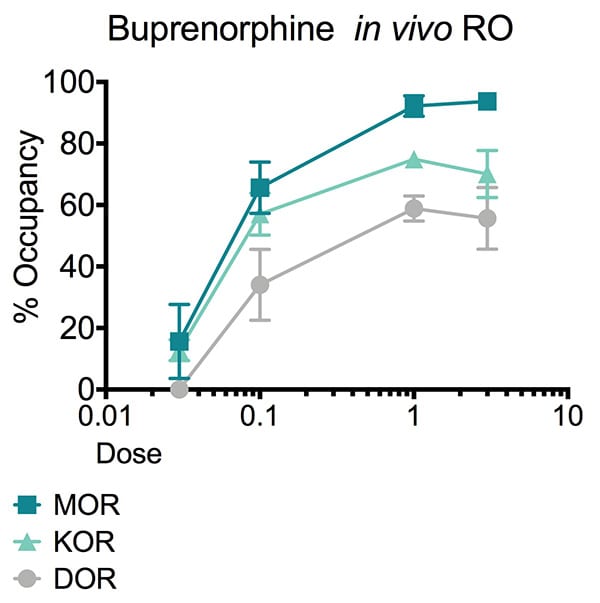Receptor Occupancy
Discover how Melior’s unique phenotypic screening platforms can uncover the untapped value of your candidate therapeutic
In vivo receptor occupancy (RO) is used to monitor the interaction of drug candidates with their targets in the brain after peripheral administration to select best leads and eliminate inferior compounds. A drug candidate has to be potent and possess good ‘drug-like’ properties to achieve significant brain occupancy of its target. This method allows to better understand the pharmacokinetic and pharmacodynamic relationships (PK/PD relationship) of a drug candidate.
To accomplish this, Melior has established in vivo RO methodology for various receptors. These assays employ liquid chromatography coupled to tandem mass spectral detection (LC/MS/MS) rather than scintillation spectroscopy to measure tracer distribution in the brain. Single or multiple tracers can be used simultaneously in the same animal.
Key Features:
- Monitor the interaction of drug candidates with their targets in the brain after peripheral administration
- Better understand the pharmacokinetic and pharmacodynamic relationships of a drug candidate (PK/PD)
- Understand the percentage of receptor occupancy required for behavioral efficacy
- Much more cost-effective that radio-labelled methods
The study summarized below illustrates the in vivo receptor occupancy versus administered dose for 2 opioid modulators across the 3 major opioid receptors (mu, kappa, delta): Buprenorphine, a mu receptor partial agonist / kappa receptor antagonist and Naloxone, a mu, delta, kappa receptor antagonist. In all cases the observed receptor occupancy at the 3 receptors for a given dose very faithfully correlates with the observed pharmacology characteristics for each compound.


Exposure-occupancy curves for subcutaneously administered buprenorphine and naloxone at the mu (MOR), kappa (KOR) and delta (DOR) opioid receptors determined in a triple ligand assay, using naltrexone, naltriben and GR105545 as tracers (administered iv 30 min after naloxone), similar to Need et al (2007). N=4 per dose group.
An in vivo Receptor Occupancy study can, including bioanalysis can generally be completed over the course of about a week. It can readily be conducted in either rats or mice. Typical group sizes are about 4 animals.
Reference
Need AB, McKinzie JH, Mitch CH, Statnick MA, Phebus LA (2007). In vivo rat brain opioid receptor binding of LY255582 assessed with a novel method using LC/MS/MS and the administration of three tracers simultaneously. Life Sci. 81(17-18): 1389-1396.
